Plaka is one of the most famous areas in Athens. The small neighborhood is full of cafes, tavernas, souvenir shops and boutique hotels. But that’s not all! Here’s why Plaka Athens is so unique.

Explore Plaka neighborhood in Athens Greece
The old historical neighborhood of Plaka is located right in the Athens city center, between Syntagma, Monastiraki and Acropolis metro stations.
Its proximity to the archaeological sites in Athens, along with its charming neoclassical architecture and lively atmosphere, make Plaka a popular area to explore.
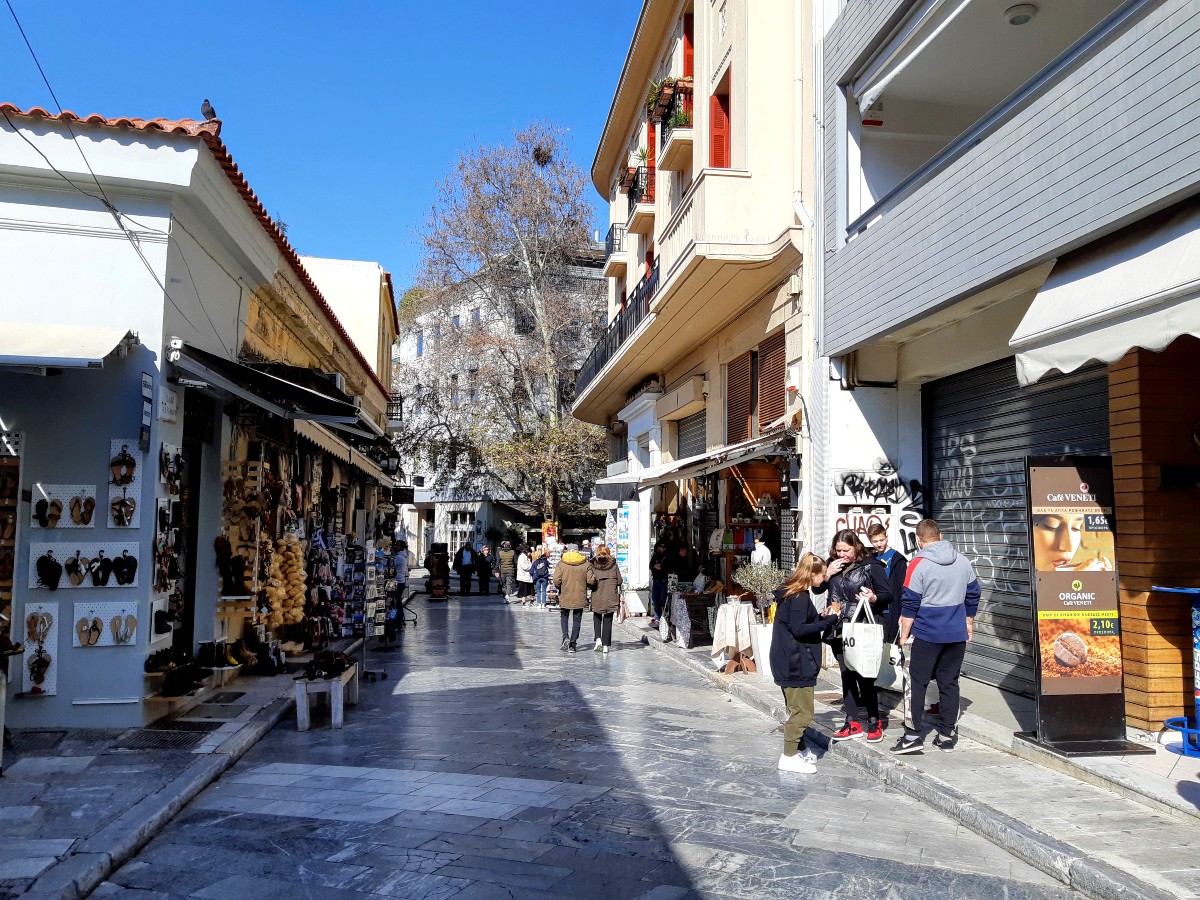
Among the maze of cobbled stone streets and alleys, you will find many cafes, tavernas, gift shops and jewelry stores. There is also a good selection of luxury hotels and budget apartments where you can stay.
Read on for some more information about Plaka, the neighborhood of the Gods.
Plaka Athens in the ancient times
Plaka is the oldest district in Athens. Due to its proximity to the Ancient Agora of Athens, it has been pretty much continuously inhabited since the times of Ancient Greeks.
One of the ancient ruins you can see in Plaka is the Choragic Monument of Lysicrates, on Tripodon street, dating from 335-334 BC. A French Capuchin monastery was built by its side in 1658.
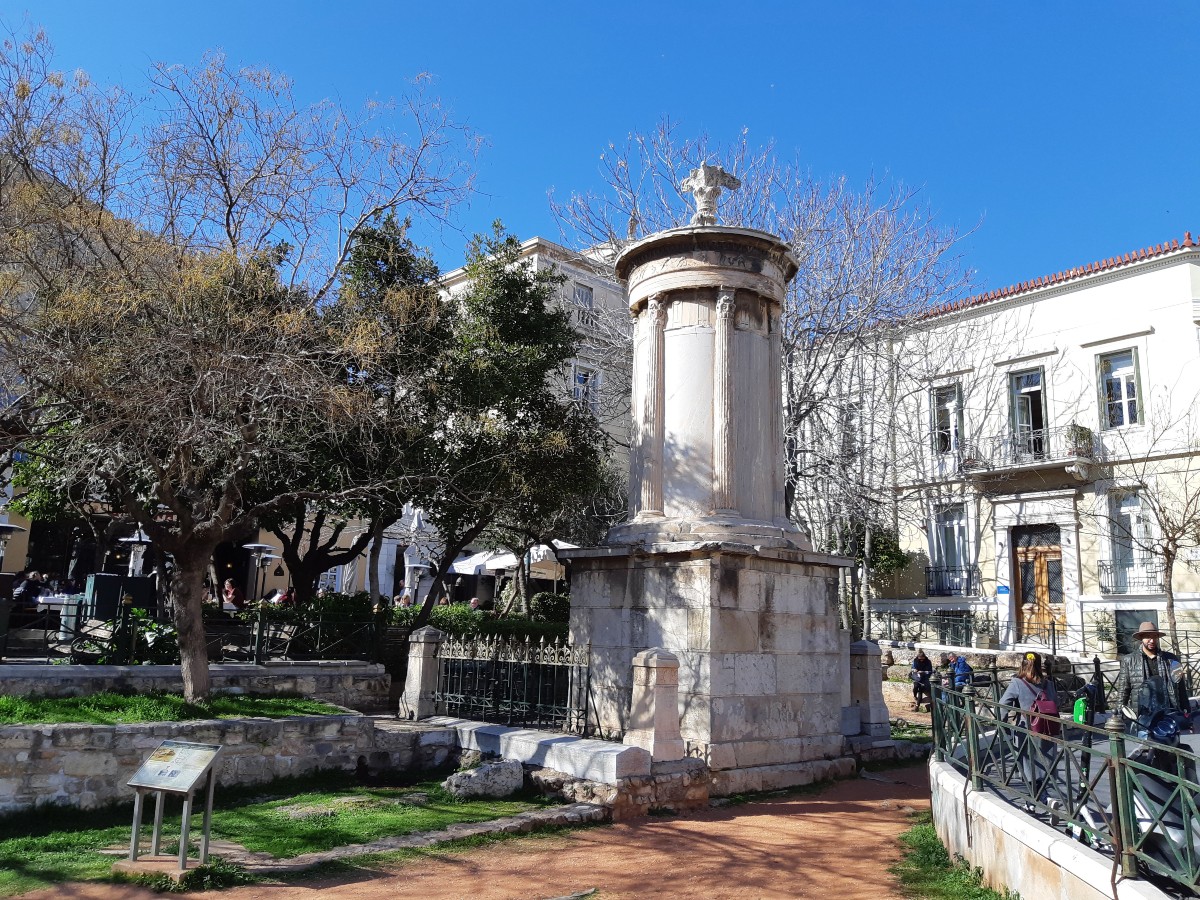
During the Ottoman Era, Plaka was where the Turkish Governor and other Ottomans lived. As such, the small neighborhood was considered to be the Turkish quarter of Athens.
After the Greek Independence War, more people came to live in Plaka. A mix of Greeks, Jewish people and Arvanites, a bilingual Orthodox group, populated the area.
The word “Plaka” probably comes from a word in the Arvanite dialect, meaning “old”.
The oldest neighborhood in Athens
Many of the houses in Plaka were built during the first few decades after the Independence War. King Otto himself invited skilled workers from the Cyclades islands to come and help reconstruct Greece’s new capital.
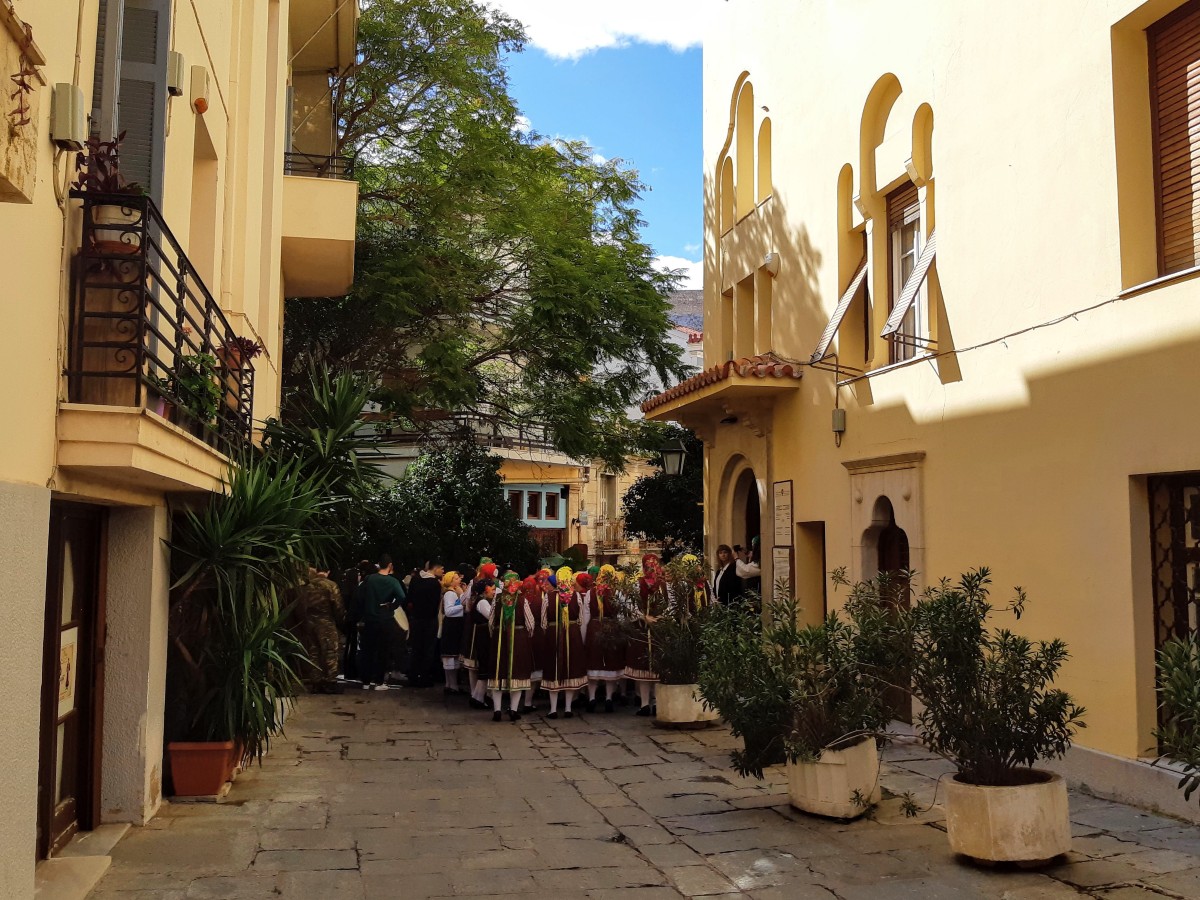
The workers came to Athens and built their own houses in Anafiotika, an area just above Plaka, which resembles a Cycladic island village. They worked hard to build the lovely neoclassical buildings in Athens.
During those times, a large market resembling a contemporary Turkish bazaar was in operation at the outskirts of Plaka. The market was located near the archaeological site of the Roman Agora. In 1884, a large fire destroyed the market and pretty much everything in the area.
Subsequently, the new Athens food market was established on Athinas street. It is still operating, and is known as Varvakios market.
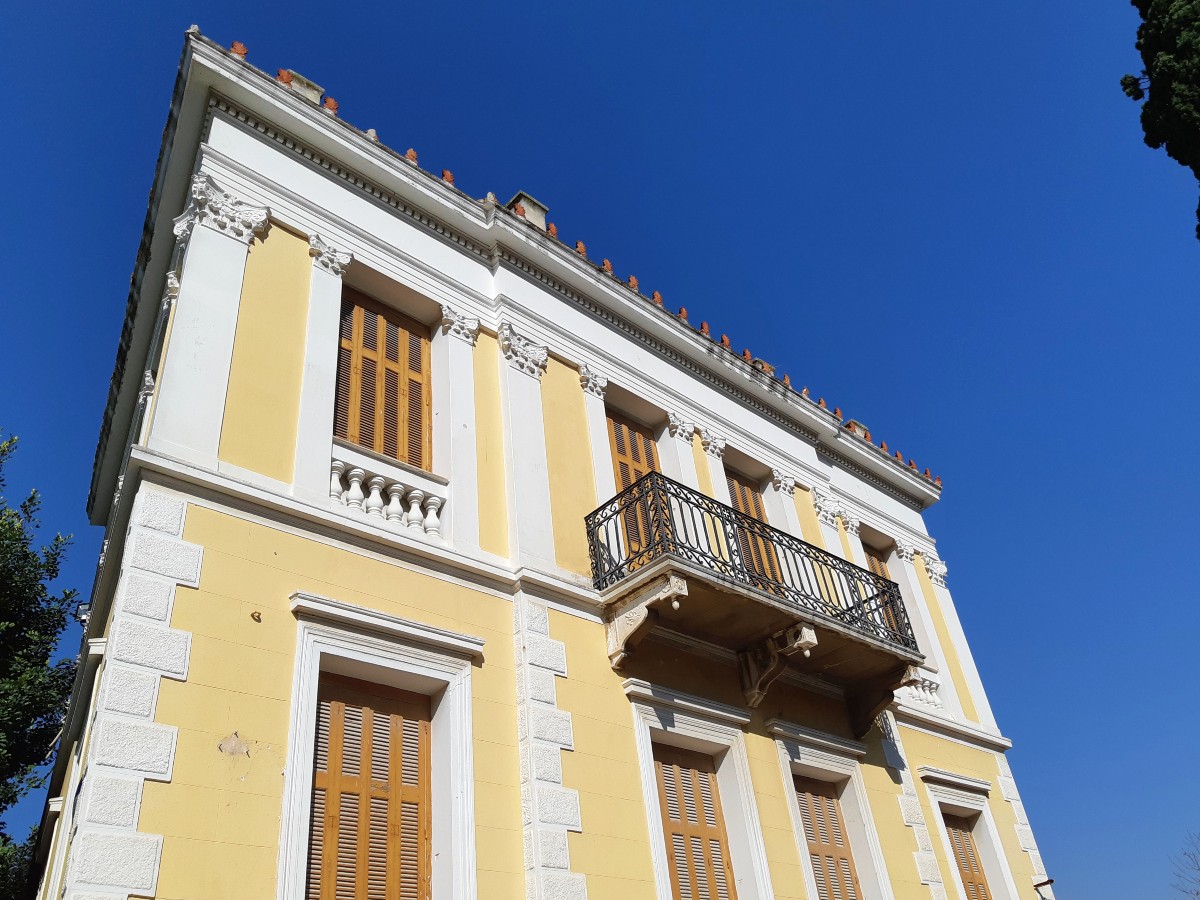
Following the fire, archaeological excavations began in the area. Several houses and other buildings just outside Plaka were demolished as a result of the ongoing excavations. It was time for Ancient Athens to resurface.
After WWII, the whole Plaka quarter was designated as a landmark area with listed buildings. Plaka is the only neighborhood that resembles old Athens, and hasn’t changed too much in the last 100-150 years.
What to do in Plaka Athens
Plaka is really worth exploring. Yes, it’s touristy, but it’s also charming. Yes, it can get busy, especially in summer, but there are also quiet corners.
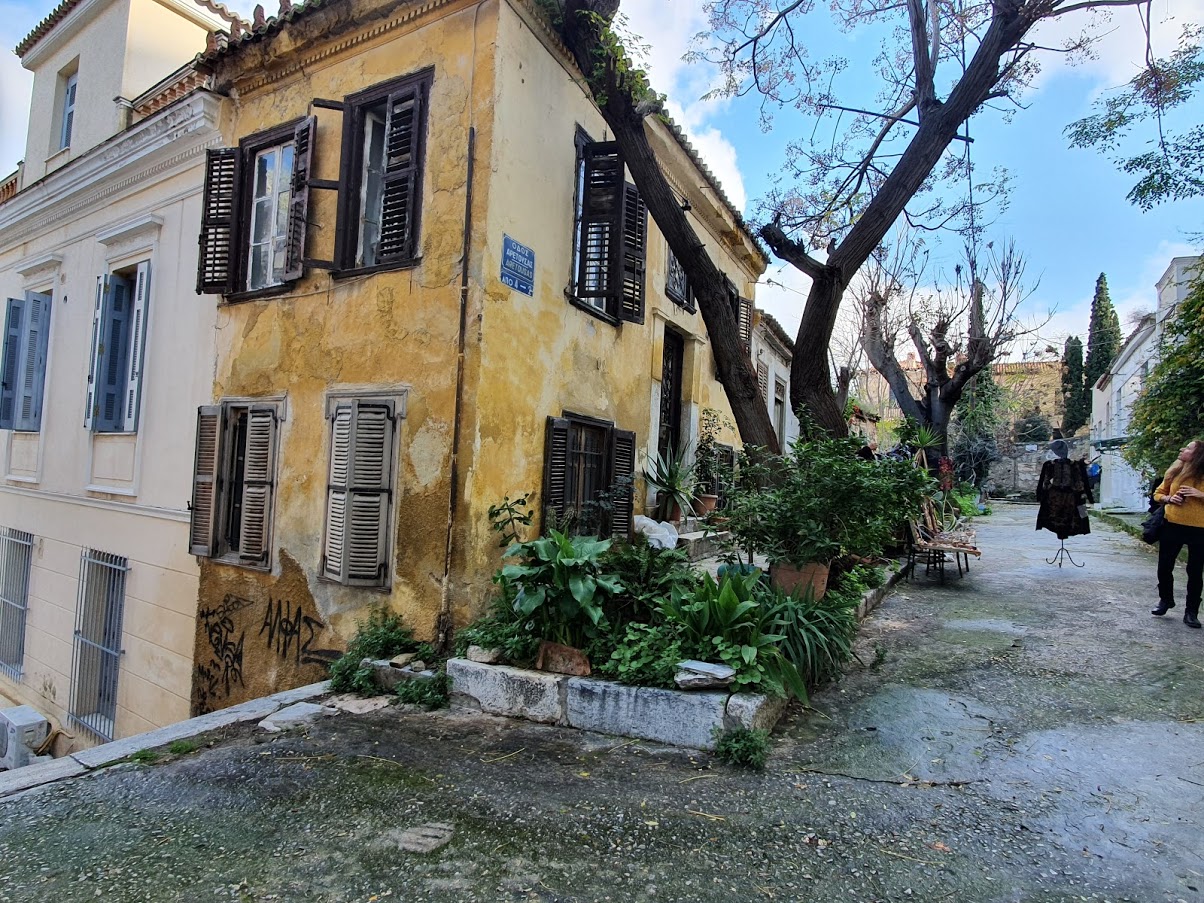
You will love Plaka’s friendly cafes, vibrant tavernas, colorful Greek souvenir and T shirt shops and interesting small museums.
As you are strolling around the pedestrian-only streets, observe the little details. Look up, and you will be impressed by the stunning balconies of the neoclassical houses. There’s so much more in Plaka than meets the eye at first!
You should be aware of the fact that Plaka has stairs, lots of stairs! If you want to explore it properly, be prepared to walk up and down a few times.
Visit the Acropolis, the Ancient Agora and the Roman Agora
Plaka is an easy walking distance from many archaeological sites in Athens. If you are staying there, you can easily visit them on foot.
The most visited site in Athens is the Acropolis, which is a large site up on the Acropolis hill. Here, you will see a few magnificent temples of which the most famous is the Parthenon, an ancient temple dedicated to Goddess Athena.
I suggest you take a guided tour of the Acropolis, as there are so many interesting facts about it!
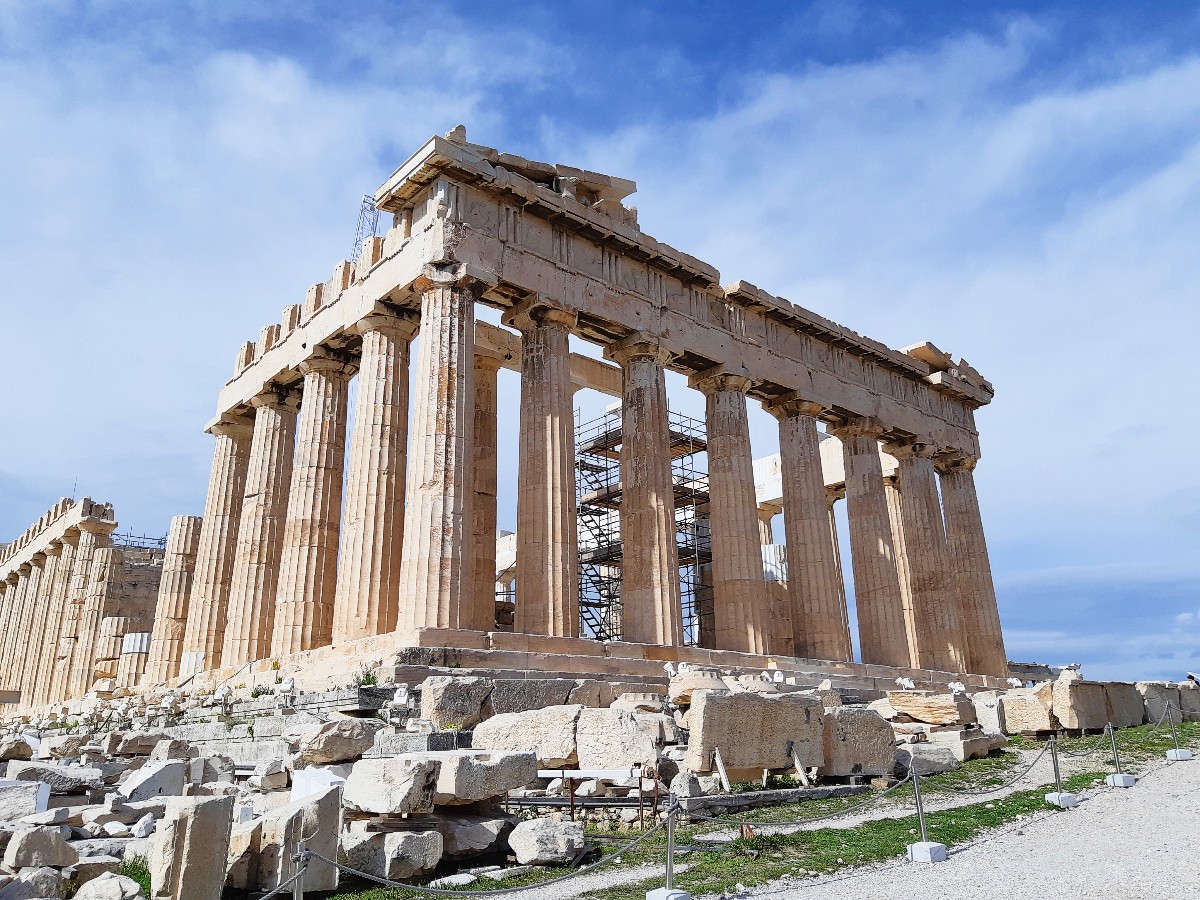
The Ancient Agora is another fascinating site. You can see the impressive temple of Hephaestus, and also learn more about Ancient Athens in the Museum of the Agora.
The Roman Agora, which is also nearby, is a much smaller site. The highlight here is the Tower of the Winds, a water clock and sundial built during the 2nd century BC.
You can find more info in this guide on all the ancient sites in Athens.
Explore the museums in Plaka Athens
For an area of its size, Plaka has more than its fair share of museums. The biggest and best known one is the Acropolis Museum, which is a short distance from Plaka.
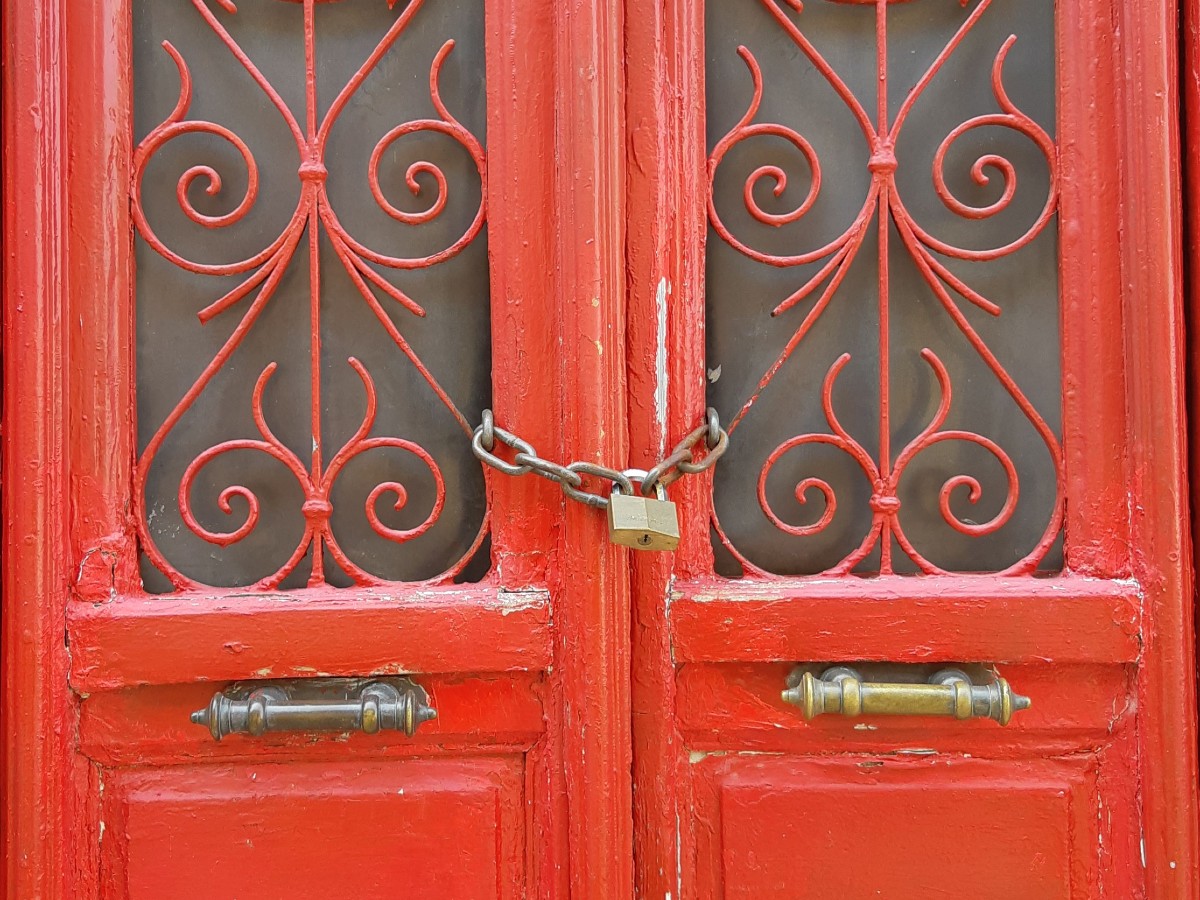
Most of the other museums in Plaka are small and not very well known, but they can help you form a picture of life in Athens from the ancient times to the present day. You could easily visit all of them on the same day, as they are all a stone’s throw away from each other.
Some of my favourite museums in Plaka include:
- Museum of Greek Popular Instruments, on Diogenous street
- Jewish Museum, on Nikis street
- Museum of Greek Children’s Art (not to be confused with the Children’s Museum), on Kodrou street
- Athens University History Museum, on Tholou street
- Canellopoulos private collection, on Theorias street
- Man and Tools Museum, on Panos street
- The brand new Museum of Modern Greek Culture, on Areos street.
You can read more here: Museums in Plaka.
Discover all the little churches in Plaka
Plaka is home to several Byzantine churches, some of which date from the 10th – 12th century AD. Most of them were reconstructed and restored in later centuries.
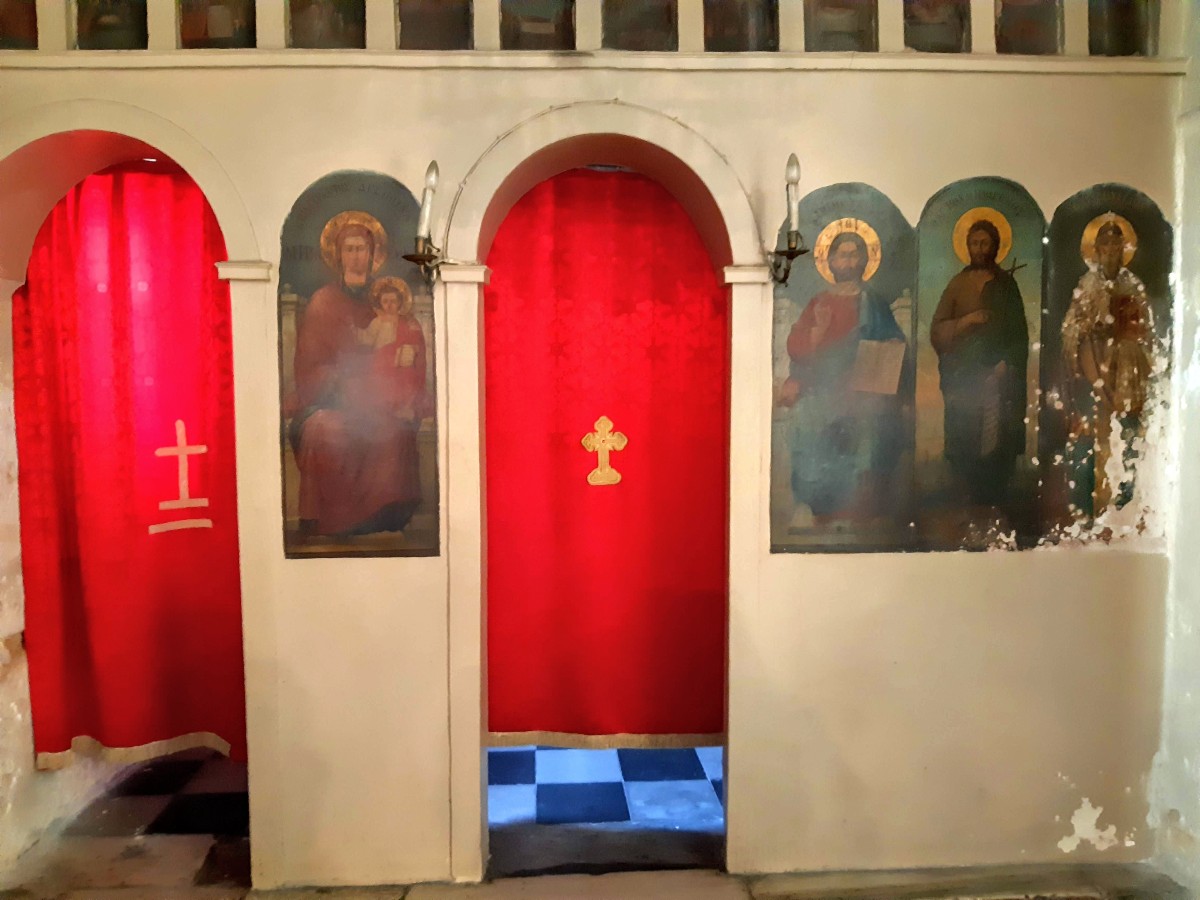
Generally speaking, these churches are open at irregular times, if at all, but you can always admire their exterior. If you happen to find them open, go inside and have a look at the icons and wood carvings.
If you happen to be in Athens on the evening of Good Friday, just before Greek Easter, you can observe the solemn Epitafios procession, one of the most amazing cultural experiences in Greece.
Follow the locals around the narrow streets of Ano Plaka and Kato Plaka (Upper and Lower Plaka), in a wonderful, mystical procedure.
It’s also worth visiting the impressive Holy Metropolitan Church of the Annunciation to the Virgin Mary, on Mitropoleos street.
Find the best souvenir shops
If you are interested in buying some Greek souvenirs or local goodies, you will love Plaka. There is a good variety of gift and souvenir stores, though prices are a little higher than in other areas.
Two of the most commercial streets in Plaka are Adrianou street and Kydatheneon street. Admittedly, many of the products on offer are quite touristy. Still, you will enjoy having a look around.
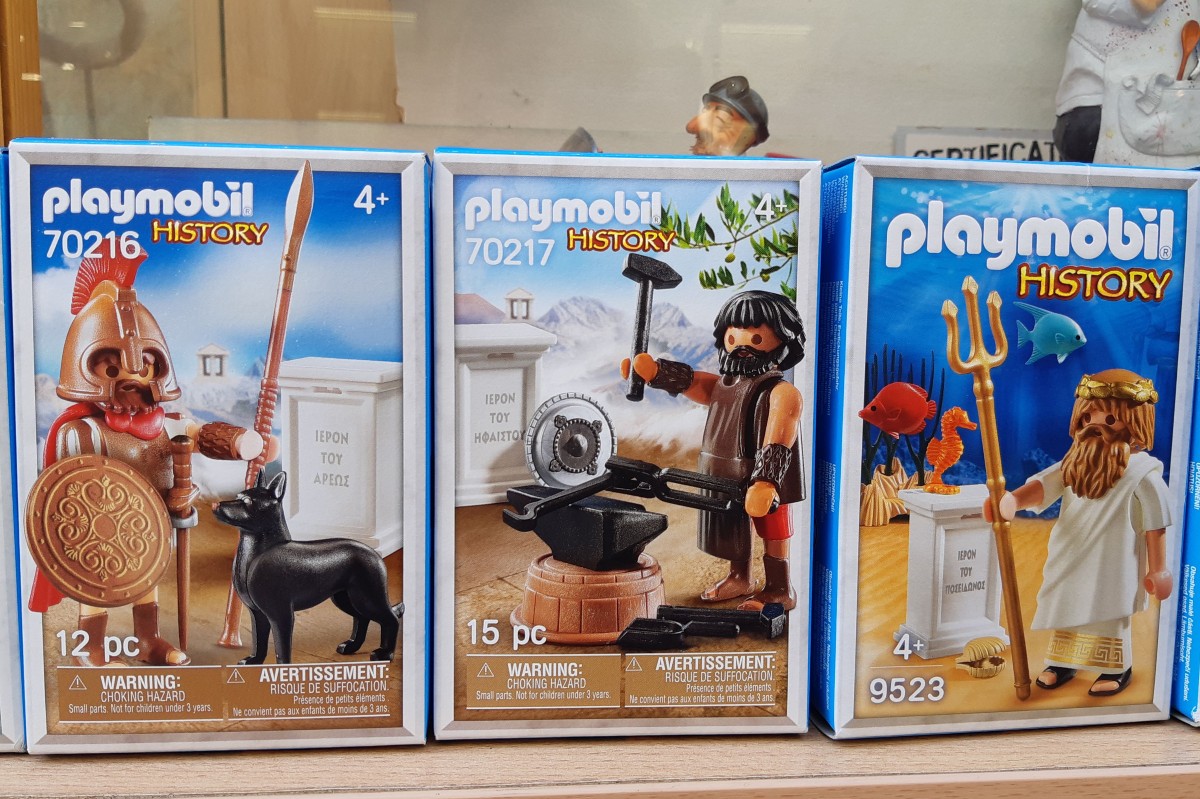
As you would expect, you can buy anything related to olive trees and olive oil. You will find pre-packaged olives, olive oil, soap bars, other cosmetics and wooden utensils.
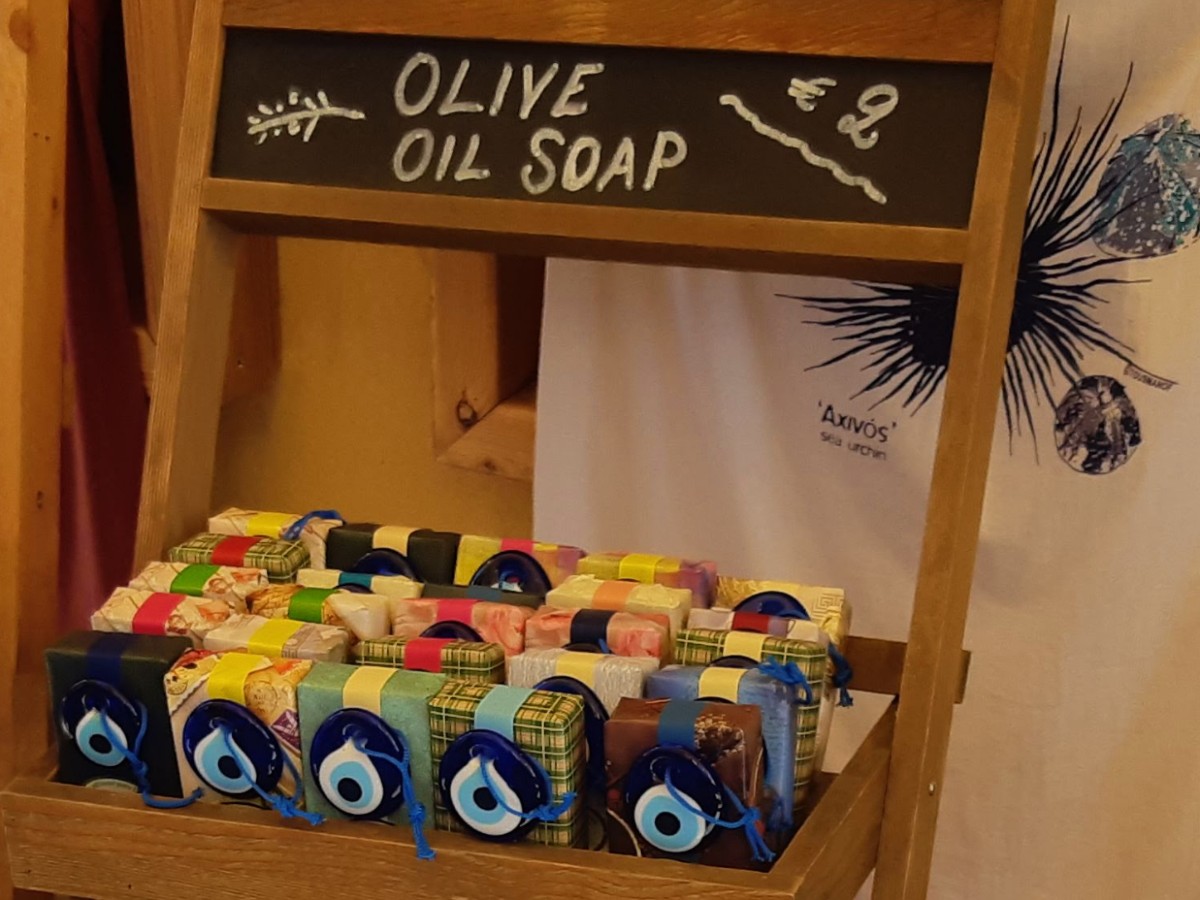
You will find a variety of leather bags and the famous Greek leather sandals everywhere in Plaka. Some may be better quality than others.
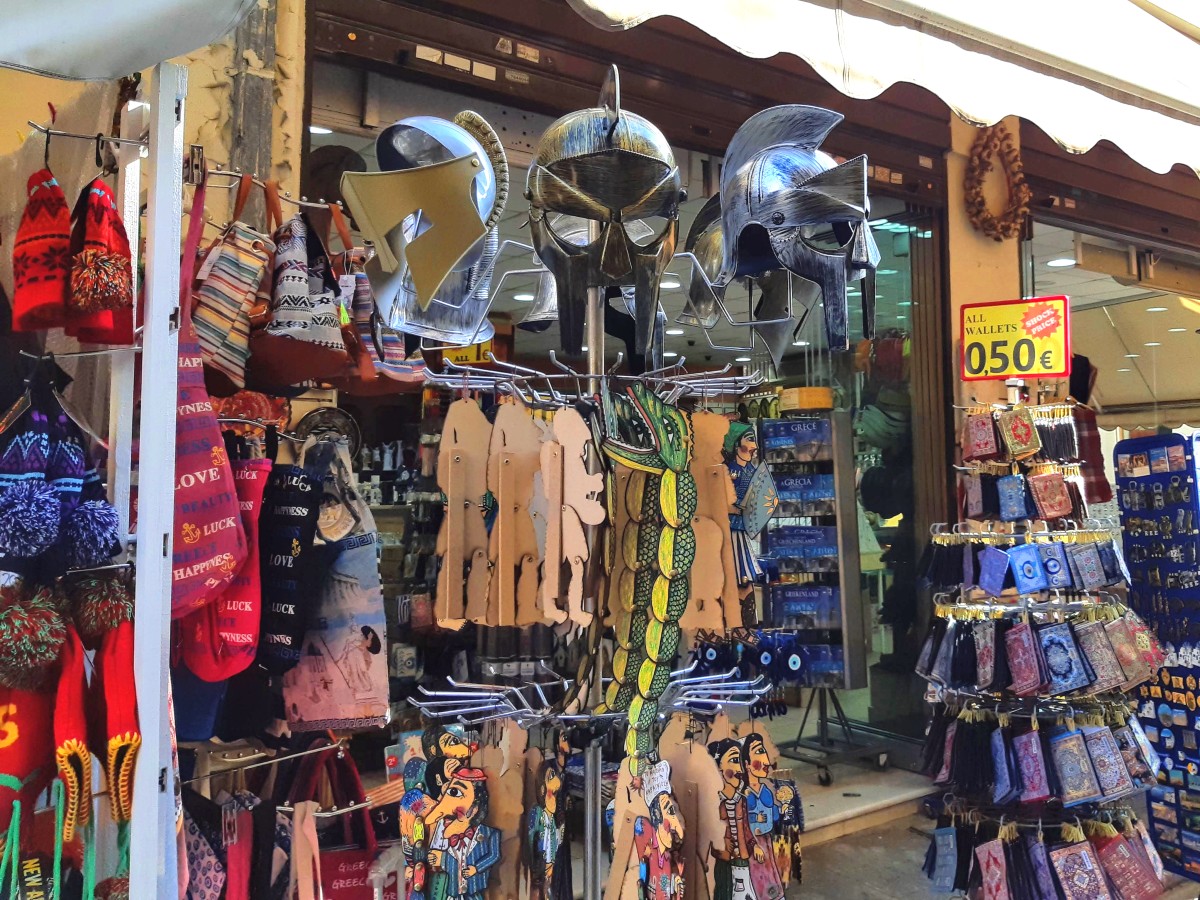
You can also find different types of clothes, from elegant dresses and hippy clothes to slightly tacky tourist T-shirts.
Larger items, such as carpets, rugs, fur coats and replicas of icons and ecclesiastical items are also available. If you are serious about any of these items, it’s best to do some in-depth research.
Finally, you can get your fix in magnets, cups, and some rather rude, phallically-shaped bottle openers.

One thing that some people will want to look for in Plaka is silver jewelry. You can find traditional designs, often based on ancient Greek art.
There are also many little stores offering unique pieces at very affordable prices. One of my favourites is AlexisP store – he makes some really cute jewellery. I’m a proud owner of two of his rings – and no, I’m not getting a commission!
Here’s some more info on the best Greek souvenirs.
Tips for souvenir shopping in Plaka
Now, here’s a word of warning. As the souvenir shops in Plaka are mostly intended for tourists, you will often get tourist prices.

Before you decide to buy anything, head to Pandrossou and Ifestou, two streets close to Monastiraki square, as you are likely to find better deals. While you are there, if you are interested in vintage items, check out the flea market on Avissinias square.
For more information, and tips on a few flea markets, have a look at this complete guide on shopping in Athens.
If you are interested in food-related gifts, like olive oil, herbs or spices, you can always head to the Varvakios Central market instead.
As for bargaining, you could try if you want, but I’d say it’s a little dated these days. Plus, VAT is really high here in Greece, so many shopkeepers are having a hard time – support them if you can!
Where to eat in Plaka
Plaka is home to all sorts of places to sit for a break. There are countless cafes, pastry shops, ice-cream shops, restaurants, tavernas and mezedopolia, where you can taste Greek cuisine.
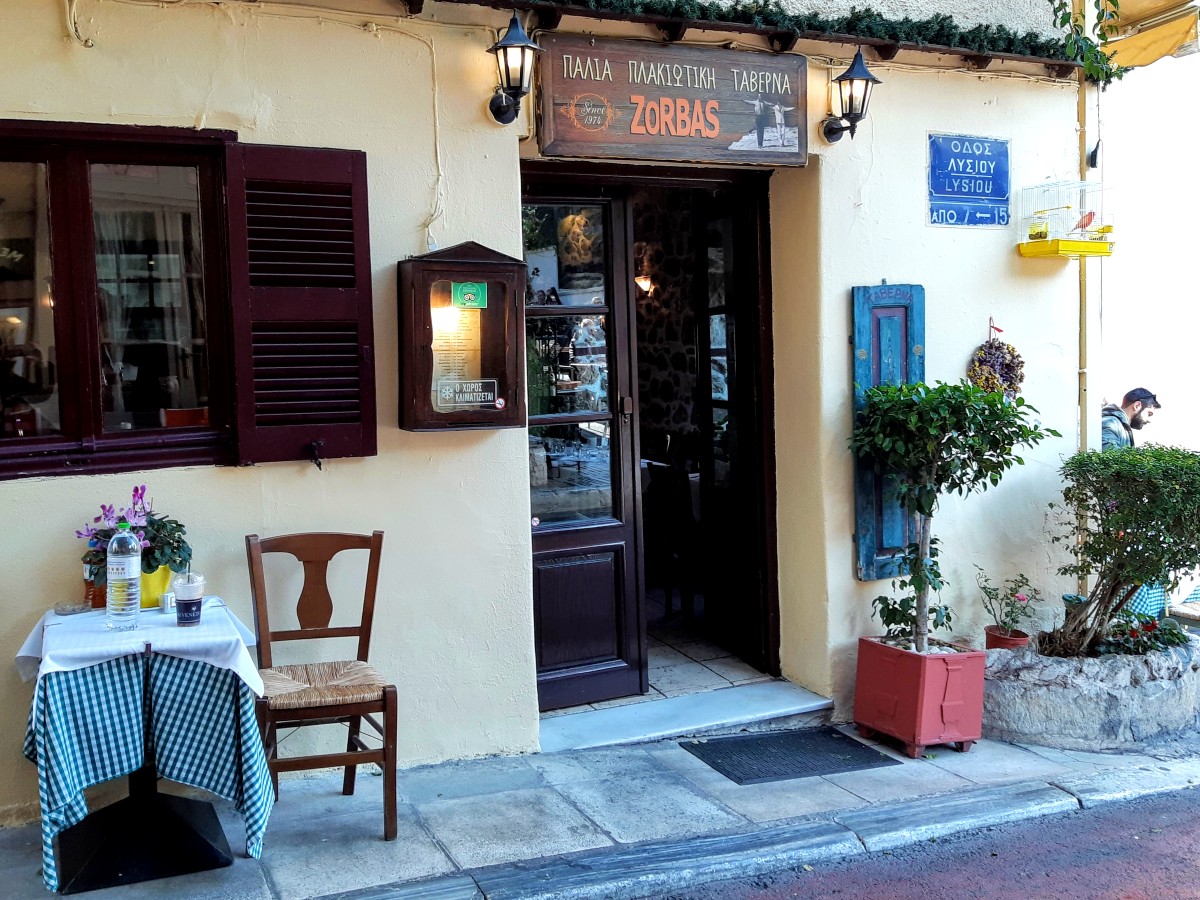
Although arguably many of the restaurants are what Greeks often describe as “touristy”, the food is generally quite good. The old advice “go where the locals go” can’t be wrong. If you look carefully, you’ll notice that many Greeks actually hang around in Plaka.
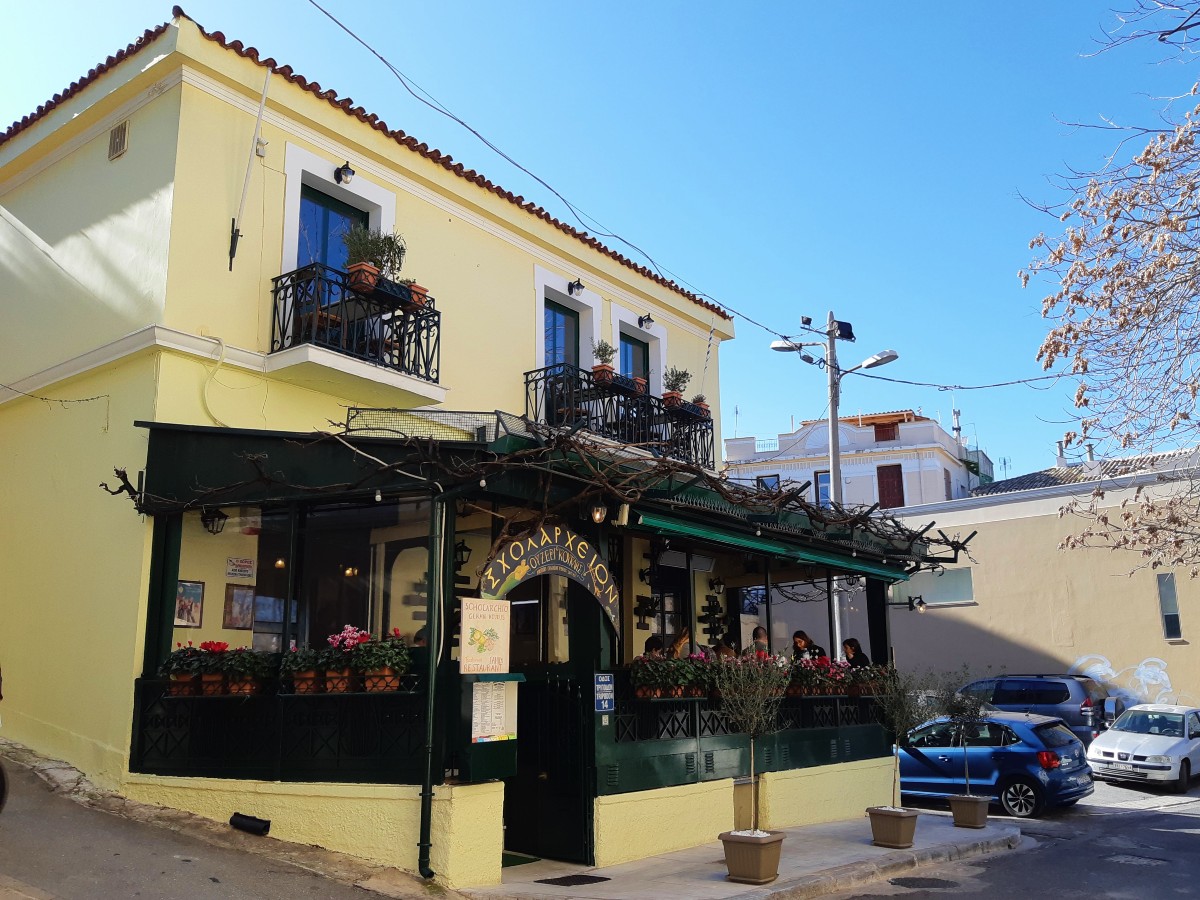
Two of the best restaurants in Plaka include Scholarchio on Tripodon street and the nearby Kafeneio on Epiharmou street. Both of them are popular, and you will usually see a mix of tourists and Greeks.

Yiasemi, a bistro hosted in an old house on the stairs of Mnisikleous street, is another popular place for a coffee break. If you are going on a weekend, you will probably have to wait to be seated. Their scrumptious desserts are worth it!
Another decent choice in the area is Platanos on Diogenous street, right next to the Music Museum. They have a nice open courtyard, and you can go and check out their kitchen if you want.
Finally, Evgenia on Voulis street, close to Syntagma Square, is very popular with Athenians. If you are after authentic Greek food in the city center, you can’t go wrong.
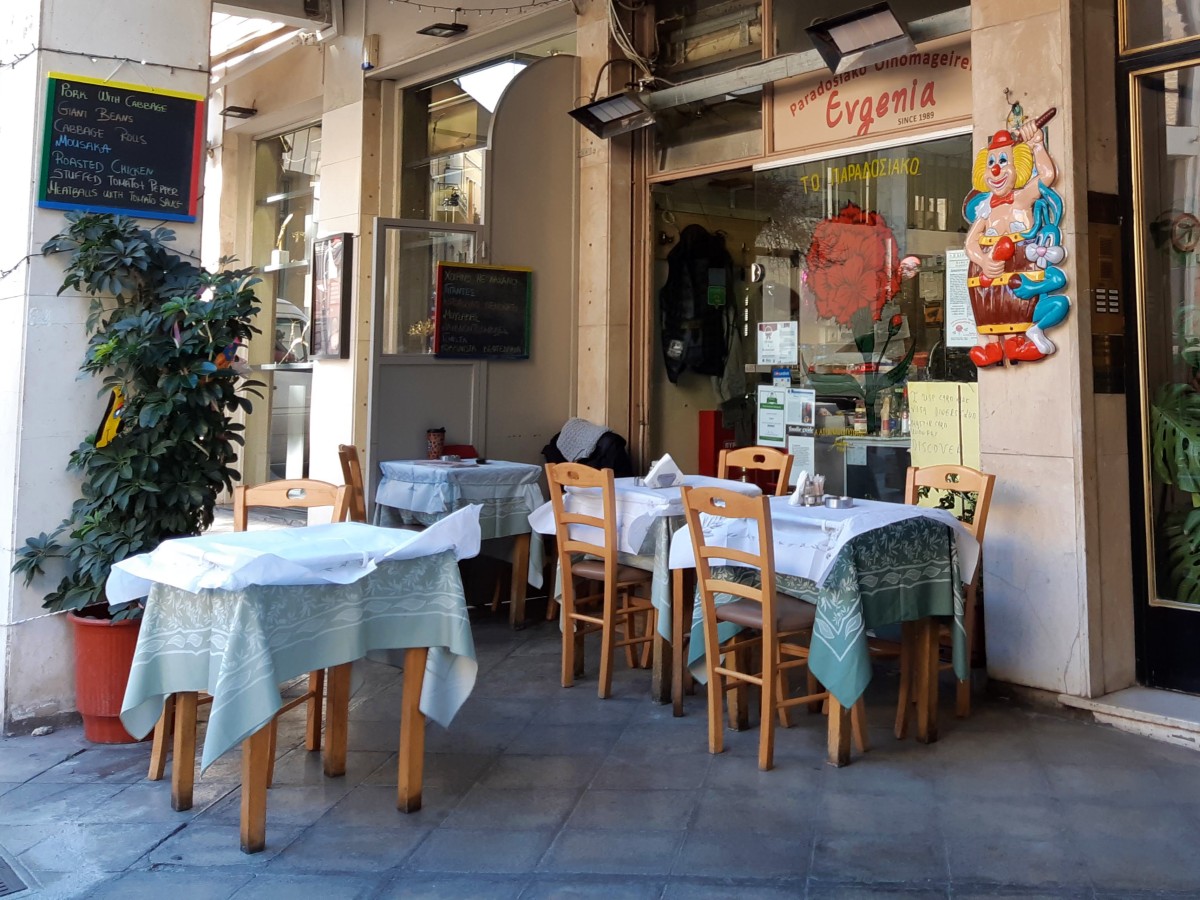
I took the above photo of Evgenia at 4 pm on a weekday, which explains the lack of customers!
Nightlife in Plaka
Plaka was one of the first neighbourhoods of Athens where nightlife became a thing.
During the glorious 60s and 70s, Athens was expanding rapidly and steadily. New blocks of flats were being built, to accommodate the thousands of people who came to live in the capital.
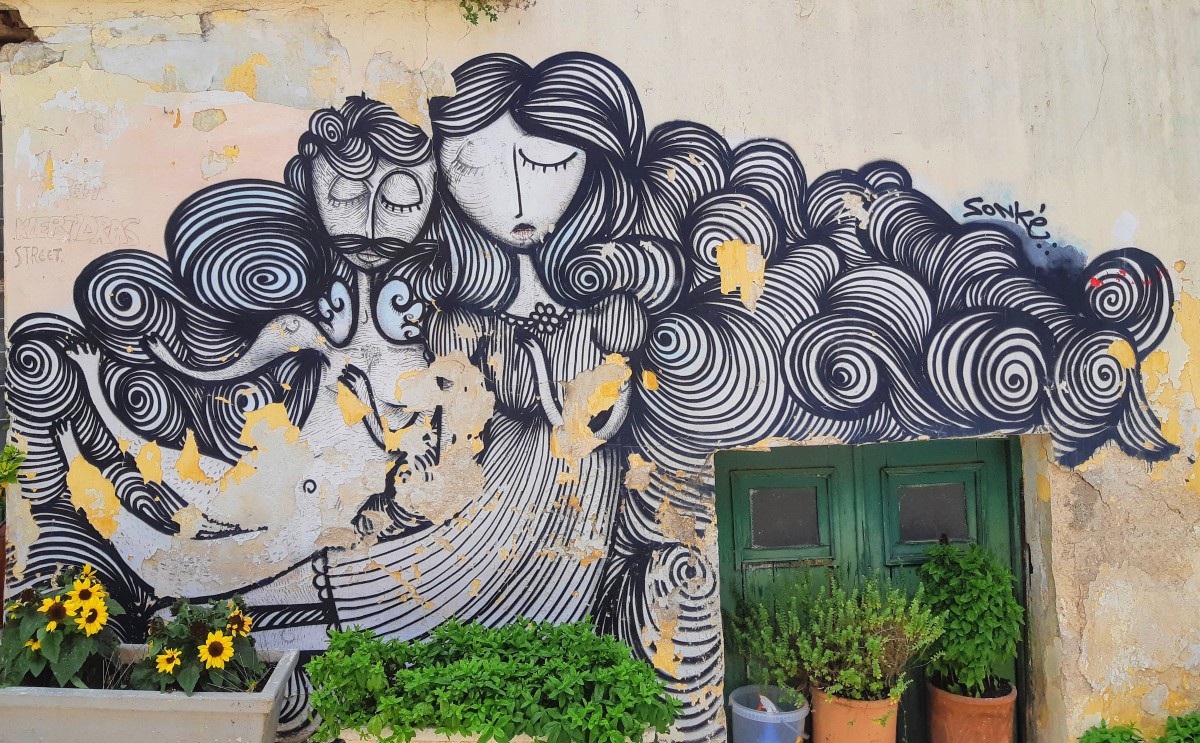
As Plaka was a traditional settlement, no new apartments could be built in the area. Rent prices went down, and the neighborhood became popular with the young bohemians of the times. Many musicians and other artists started hanging out in Plaka’s small streets.
Tiny music bars, known as boites (from the French word for box), opened everywhere in the area. They attracted a young, artsy crowd, who were crammed together with the young musicians.
The ambiance was unique, and apparently these bars may not have been exactly legal. Eventually, many of them were closed down.
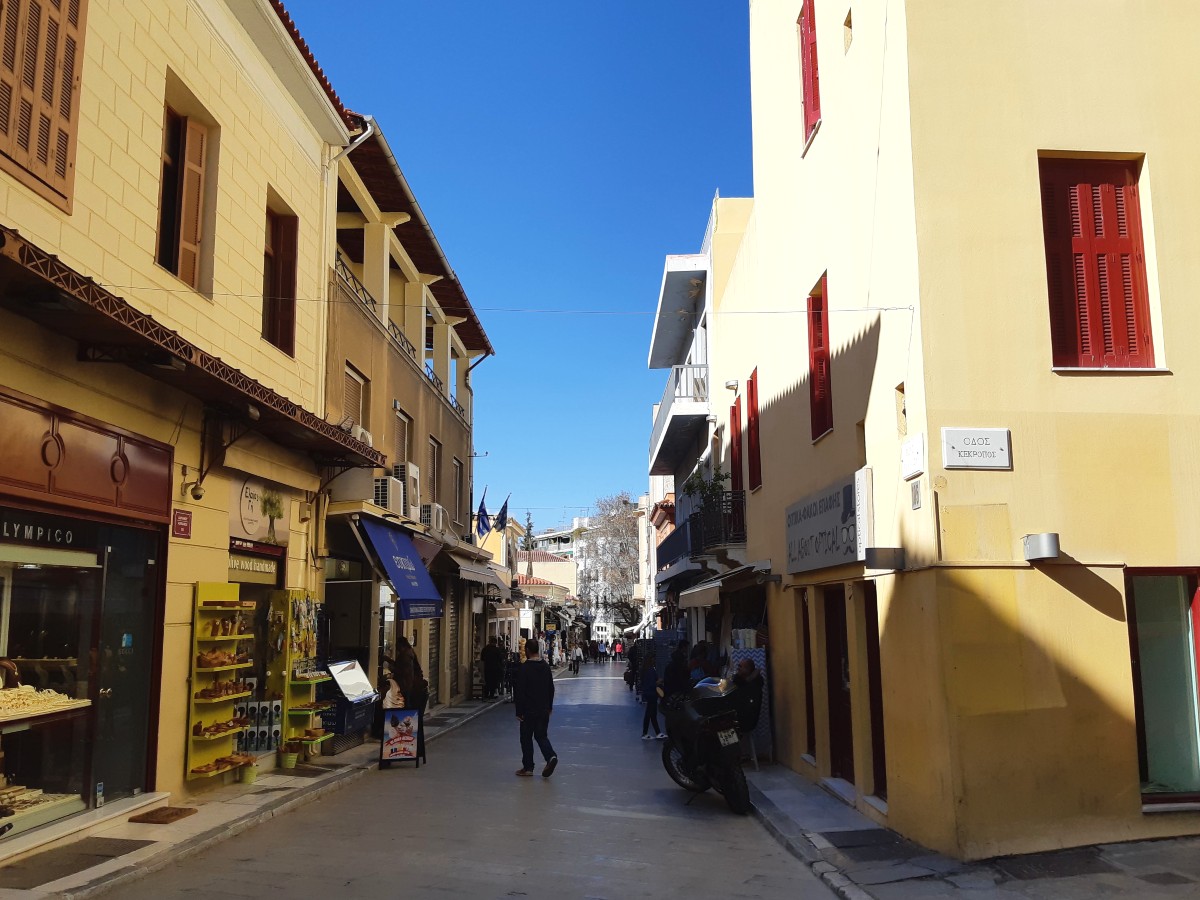
These days, nightlife in Athens has moved elsewhere. Still, Plaka has a fair few late-evening cafes and bars. Even though nightlife in Plaka is not as big as it was in the 70s, you can still have a late drink, or spend the evening in a music taverna.
Watch a movie at an outdoor cinema
One of the best things to do in Plaka at night is to watch a movie at Cine Paris.
Open daily from May to October, this unique open-air cinema with a view to the Acropolis Hill is really popular, so it’s best to pre-book your tickets online.
Tip: Even if you have a ticket, it’s best to get here early – queues for snacks and drinks can get quite long.
Where to stay in Plaka Athens
If this is your first time in Athens, Plaka and the nearby Koukaki area are among the best areas to stay. You will always be only a few blocks away from a place of interest!

Some hotels in Plaka Athens are much newer than others, and prices can vary widely. If you are interested in views of the Acropolis, make sure you read the hotel descriptions carefully. Don’t expect the budget hotels to offer a view!
Here is some more information for hotels in Athens:
How to get to Plaka from the Athens airport
There are three ways to get to Plaka from the Athens airport: by bus, metro, or taxi / transfer.
Many people prefer to take the metro from the Athens airport to the Acropolis and Plaka. Depending on where in Plaka you are staying, you could get off at either Syntagma, Monastiraki, or Acropolis metro station. One way tickets costs 9 euro, and the metro runs every 30 minutes.
I’ve a guide here on how to take the Athens airport metro if you’ve never used it before.

The airport bus, X95, will drop you off close to Syntagma Square, from where you can walk. Here is my full guide on how to take the airport bus.
If your hotel is too far, the bus might not be the best choice. Tickets only cost 5.50 euro though, and there are normally 3-4 buses per hour.
Finally, a pre-booked airport transfer will probably make more sense if you are travelling in a group, or if you just don’t want the hassle of using public transportation after a long plane trip.
If you are thinking to rent a car during your vacation, it’s best to rent it after your stay in Athens. Trying to find a parking spot in Plaka, or anywhere in central Athens, is a terrible idea!
Here’s some more information about driving in Greece.
FAQs about Plaka in Athens
Here are a few questions most visitors ask about Plaka:
What is so special about Plaka in Athens?
Plaka is the oldest neighborhood in Athens, and it’s right in the heart of the city. Due to its charming architecture, good selection of shops, cafes, restaurants and hotels, it’s a popular place to visit.
Where is the Plaka area in Athens?
Plaka in Athens is located in the city centre, between Syntagma, Monastiraki and Acropolis metro stations.
What’s the best way to see Plaka?
You can wander around the pedestrian streets in Plaka on your own, and discover the churches, souvenir shops, cafes, restaurants and street art. Alternatively, you can take a walking tour.
Do you need to book in advance to visit Plaka?
Plaka is a small neighborhood in Athens, and you can visit on your own. If you want to take a walking tour, it’s best to book in advance.
How far is Plaka from airport?
Plaka is about an hour’s drive from the Athens International Airport. The metro runs every half hour and takes a little under an hour.
Visit Plaka Athens
I hope that this article has given you some insight to one of Athens’ most visited neighbourhoods. And by the way, Plaka is a common name here in Greece – as an example, here is some information on Plaka Milos!

Hi! I am Vanessa from Athens, and I’m very fond of my vibrant city, with all its bustling neighbourhoods. I really enjoy walking around Plaka, and can’t help wondering what life was like here a hundred, or a thousand years ago. My favorite day to explore Plaka is a Sunday, as it’s the only area where some shops are open and the ambiance is lively. When you visit Athens, make sure to check it out!
Follow me on my social media for more Greece-related news and inspiration:
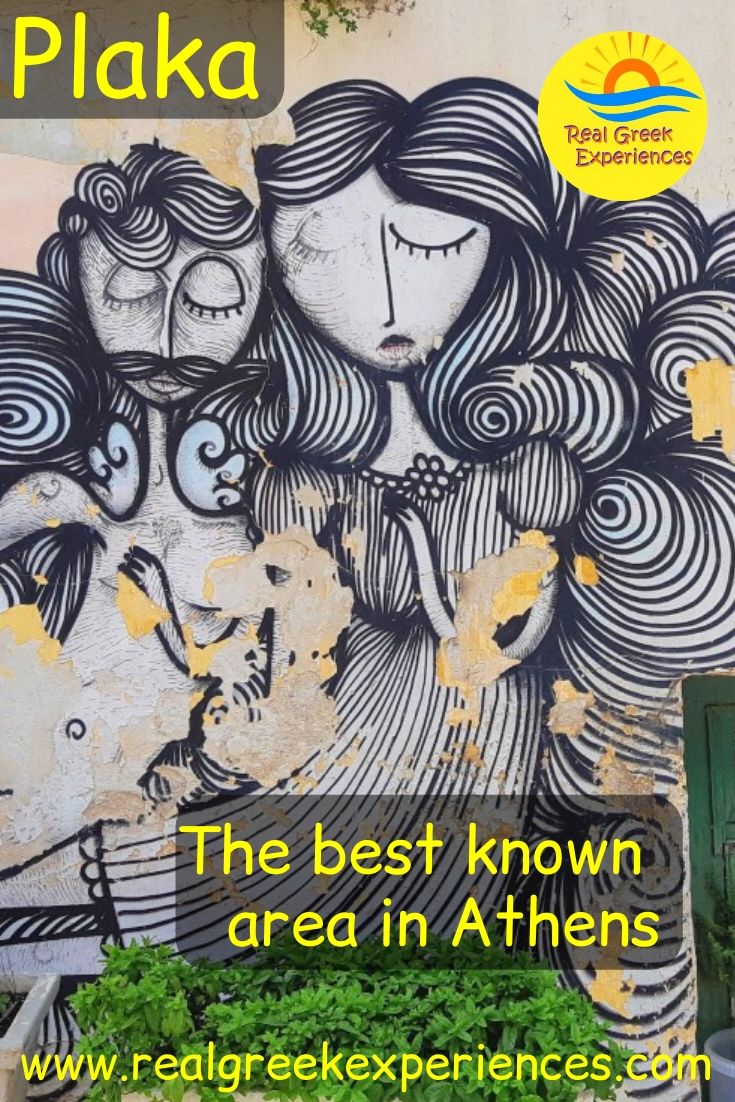

Wonderful insight especially about the lots of stairs , will be visiting at the end of April…thankyou
With the latest news on corona virus, as of 15 March, it looks like you may have to postpone your trip. But don’t worry! Plaka will always be there. Feel free to get in touch before you come!
Looking for jewelry store in Placka visited in 2012.
Sold Constantine or Konstantine women’s jewelry
Help find on internet
Could it be this one? https://www.konstantino.com/